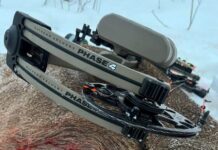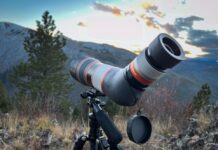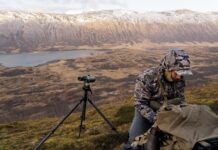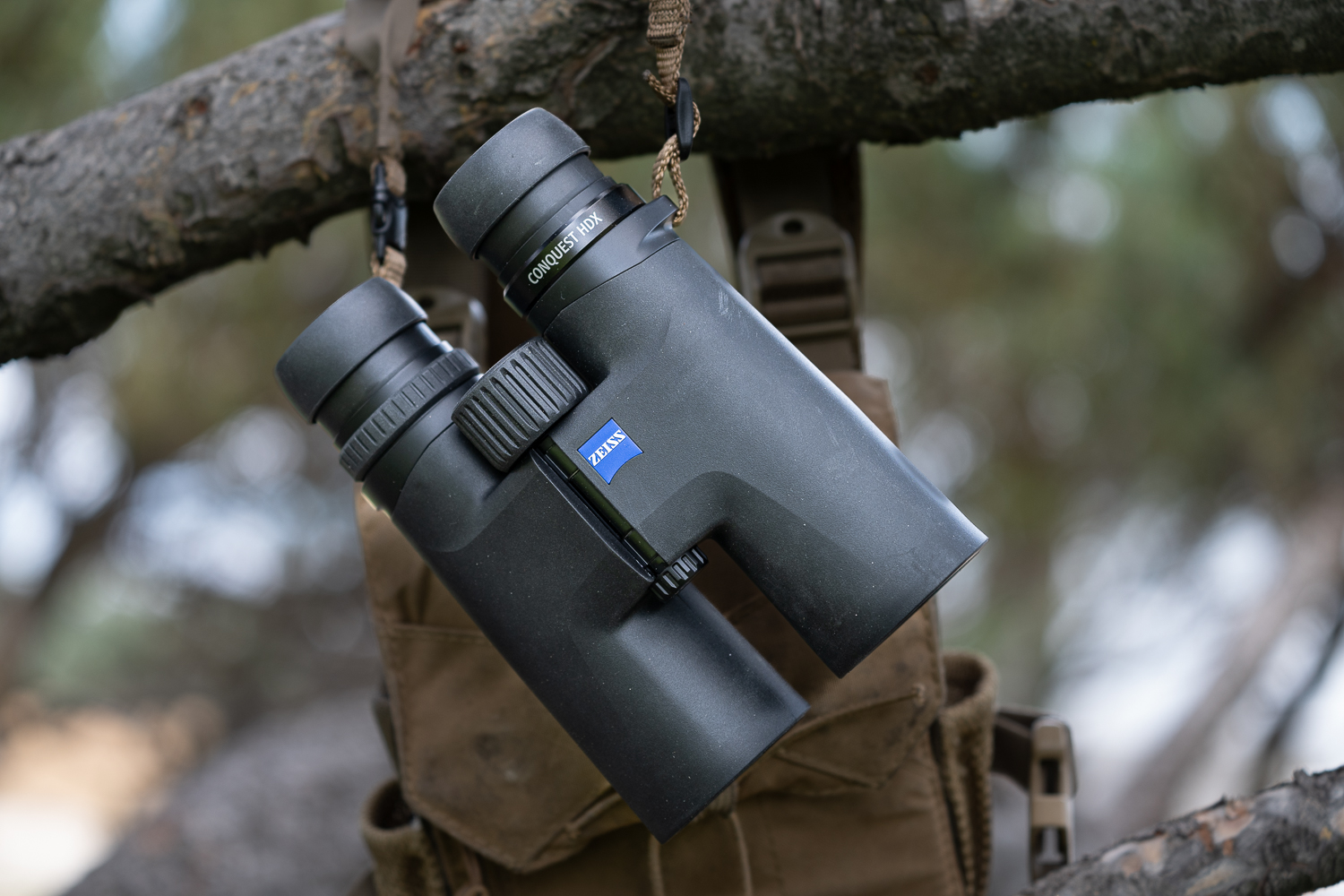
Serious hunters are familiar with the Zeiss name in optics. The German company was founded by the legendary Carl Zeiss in 1846—that’s right, Zeiss was founded prior to the Civil War. When it comes to binoculars, Zeiss has long been known for its flagship products, such as the Dialyt binocular of the 1960s, the first phase-coated binoculars of the 1980s, the Victory line of the 2000s, and the newest SF ultra-premium line today.
Zeiss Victory Conquest
While Zeiss made its name on the flagship products, Zeiss binoculars aren’t only for the wealthy. In 2003, Zeiss introduced a “Victory Conquest” line of mid-priced binoculars that brought Zeiss quality to the masses. The Conquest line was really popular, not just for the excellent price-to-performance ratio, but also for bringing regular folks into the Zeiss arena.
This midrange segment of the binocular market saw an explosion of competition in the past two decades, with many companies jumping in with high performance competitors to the Conquest.
Zeiss Conquest HDX
Now, in 2024 Zeiss seeks to reset the market with the Conquest successor, the Conquest HDX. Zeiss says the Conquest HDX is a completely new design with the intent being the most well-rounded, top optic in the segment. The Conquest HDX is being released as a full line, with compact Schmidt-Pechan prism models in 8×32, 10×32, 8×42, and 10×42 models, while bigger, longer Abbe-Koenig prisms are fitted in the large objective 8X56, 10X56, and 15X56 models. See the full line here.
I got my hands on a pre-release sample of the 10×42 Conquest HDX to take a look at how Zeiss did in fulfilling these design goals. It was only fair to compare the new binoculars with one of the current segment leaders, the Maven B1.2 10X42.

Features
As part of that well-rounded design intent, Zeiss wanted to ensure that the new Conquest HDX had the full list of premium features. This included field-flattened eyepieces, locking diopter adjustment, easy tripod adaptation, all-weather rubber armor, removable eyecups, a durable build, and “Lotutec” hydro/oleophobic coatings.


Build Quality
There is a proud “designed by ZEISS” scrolled on the focus knob, while “Made in Japan” is discretely embossed in the armor on the underside of the hinge. The fit and finish are excellent, and Zeiss’s more expensive SFL and SF binocular lines are brought to mind. The locking diopter adjustment is a heavy-duty rubberized ring on the right barrel. The removable eyecups are made of quality plastic with smooth, contoured rubber cups. The four positions have a nice detent and hold well against pressure.

Like other Zeiss binoculars, the Conquest HDX objective barrels are not circular and take form-fitting tethered covers that match the asymmetrical design. A 1/4-20 threaded knob hides the standard tripod exit.

Fast Focus
The entire focus from closest to infinity takes 1.3 turns of the focus wheel. The rubber armor appears smooth but has a light texture that gets impressively grippy when wet. The center hinge is a little larger than competitors like the Maven B1.2, leaving room for the pinky and ring finger to grasp the barrel while the pointer finger operates the focus wheel, and the middle finger rests on the hinge.
Zeiss claims robust construction with the magnesium frame in the Conquest HDX, and it certainly feels like it. They also say the binocular has been tested as waterproof to 4 MBAR (submerged 13 feet for two hours).
Using With Glasses
Eye relief is in the 17mm-18mm range. With glasses I was able to get the entire field of view with the eyecups collapsed and putting the glasses right against the eyepiece.

Optical Performance
The new Zeiss Conquest HDX is a solid optical upgrade to the original Conquest HD. The field of view at 347 feet/ 1000 yards is just slightly wider than the original Conquest’s HD’s 345 feet/ 1000 yards and matches the Maven B1.2’s FOV. Centerfield resolution performance is similar to the Maven B1.2, with both binoculars resolving the same element on my chart, although the Maven resolved that element a little more cleanly.
The Maven B1.2 is well regarded for class leading low light performance. In low light the Zeiss did well providing similar apparent illumination to the Maven. However, as light dwindled I was able to squeeze just a bit more detail out of the Maven.
Field curvature was a little better controlled in the field-flattened Zeiss compared to the Maven, although this was not noticeable when glassing at distance.
Both binoculars had good contrast in their image, with the Maven having a touch more to my eye.
Chromatic Aberration
The Conquest HDX shows a slight amount of color fringing in the center of the field. While the Maven also shows a tiny amount, the Conquest HDX has a touch more.
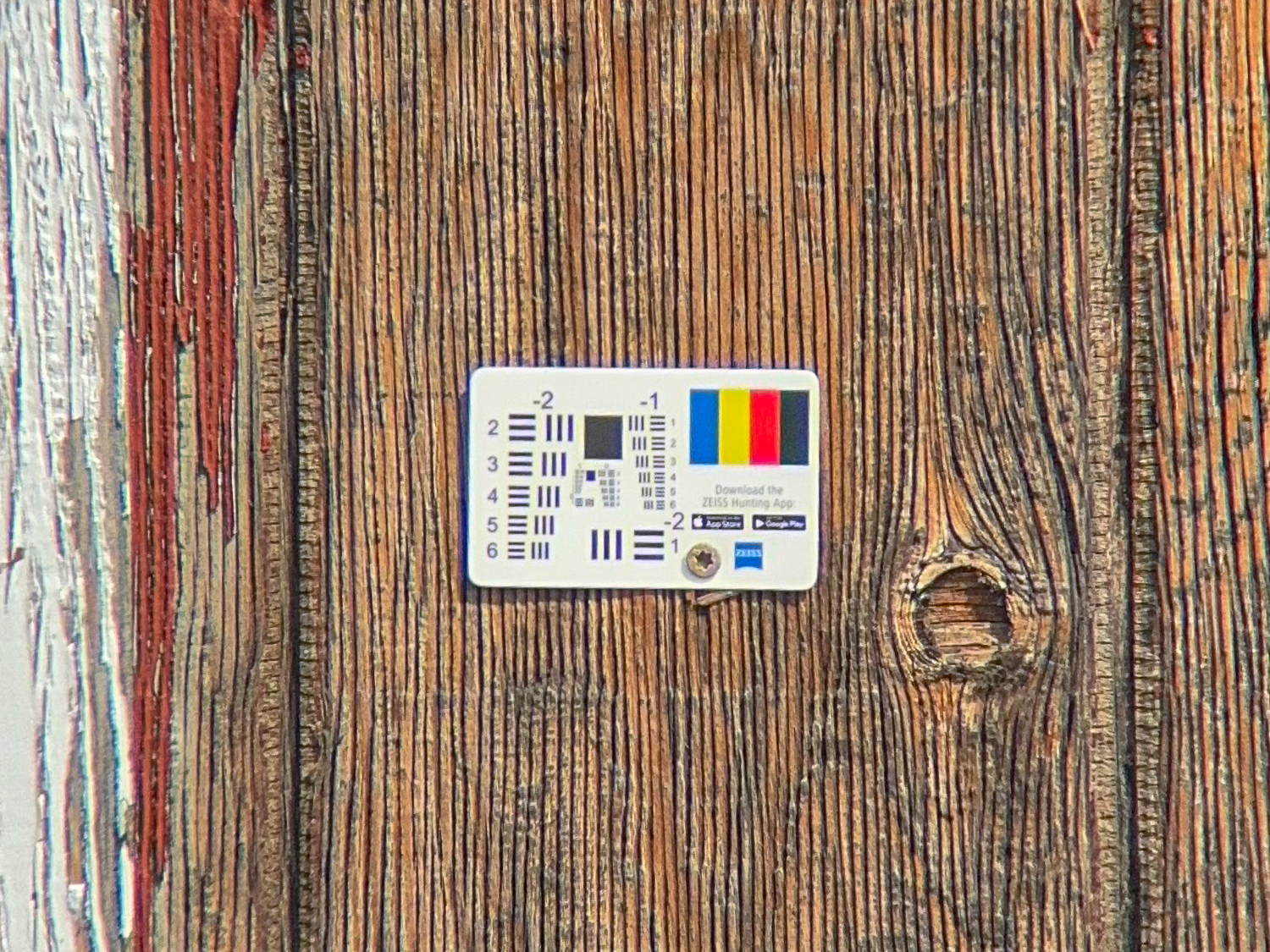

NOTE: These digiscoped photos are for showing color fringing only. Do NOT make conclusions about sharpness from these photos.”
At the edge of the frame, both binoculars show a visible amount of fringing, while again the Maven B1.2 shows slightly less.
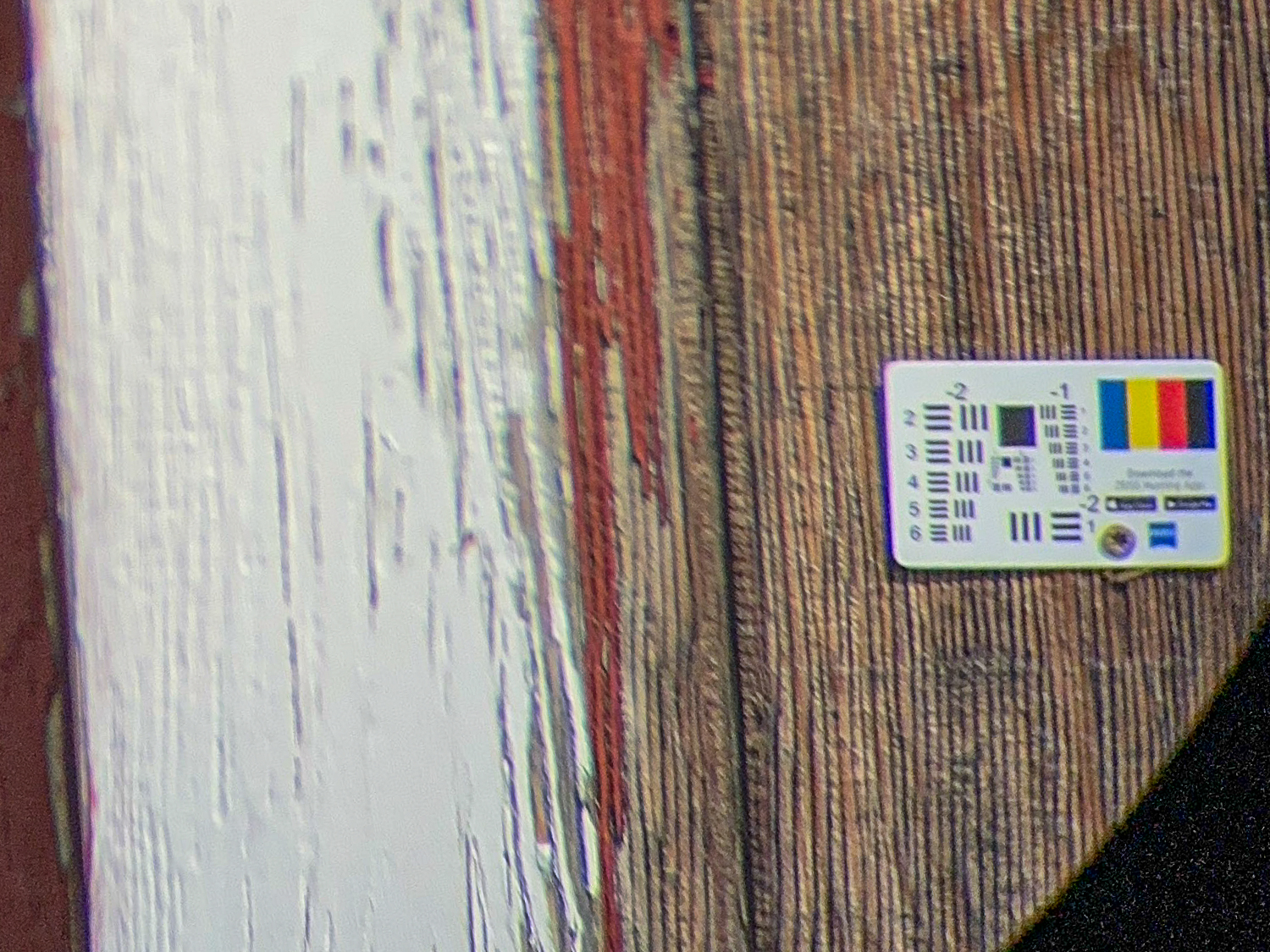

NOTE: These digiscoped photos are for showing color fringing only. Do NOT make conclusions about sharpness from these photos.”
Distortion
Distortion was very low in the Conquest HDX. A small amount of “mustache” pincushion distortion was visible when looking at the rectangles on my garage door. The Maven B1.2 showed a similar shape of distortion but to a slightly higher degree.
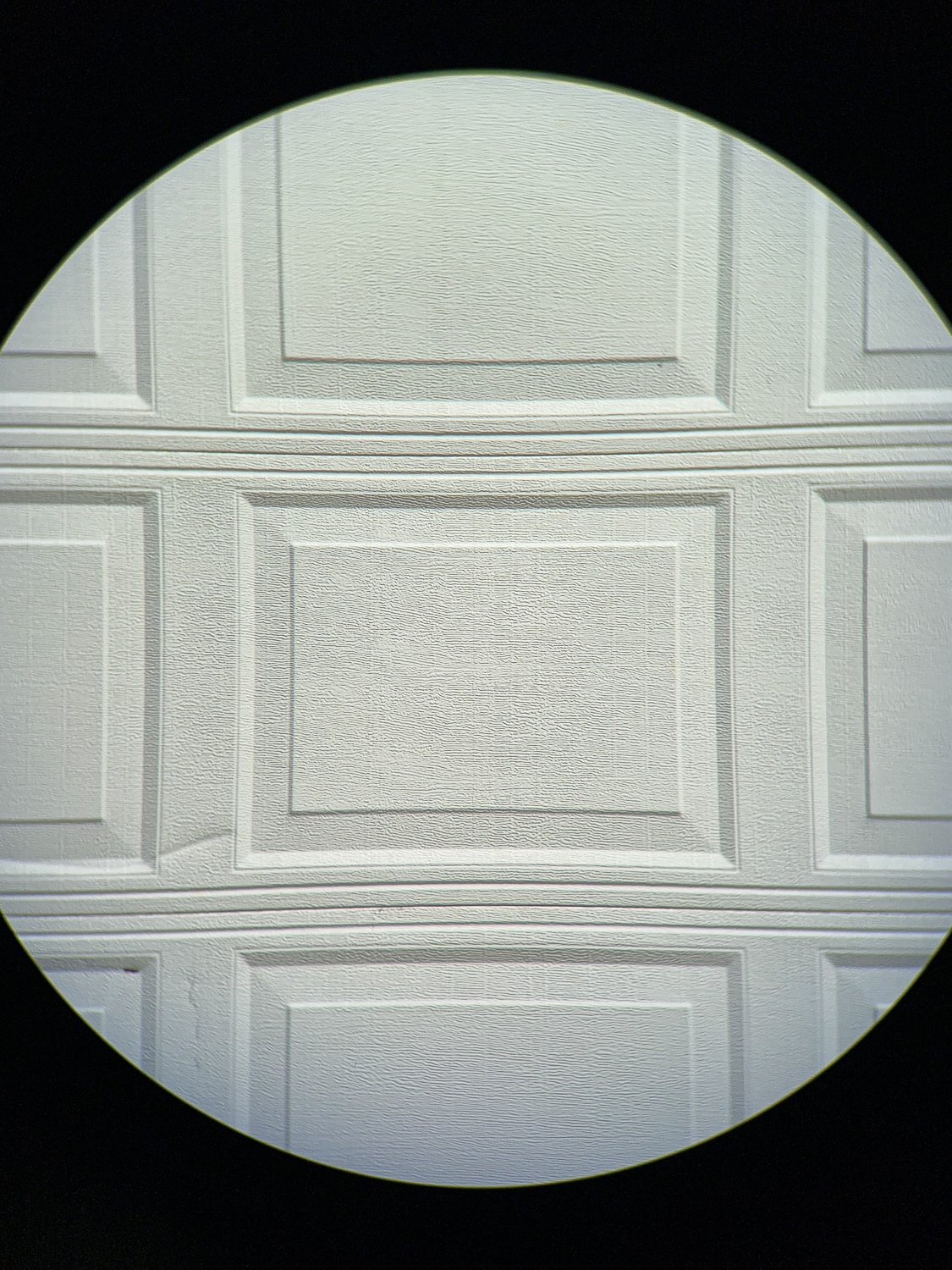

NOTE: These digiscoped photos are for showing distortion only. Do NOT make conclusions about sharpness from these photos.”
Field Performance
I used the Conquest HDX for general scouting duties over the summer. In the field, I really appreciated the Conquest HDX’s feature list. It was easy to keep them clean with hydrophobic lens coatings and removable eyecups. The rubber armor provided a secure grip, even when wet. The compact size and low weight of 25.4 ounces saves 1.3 ounces off the already light Maven B1.2’s 26.7 ounces. The fast focus and excellent apparent depth of field also made for a great user experience.
Overall, in the field, the new Conquest HDX was a good, well-rounded binocular.

Conclusion
Zeiss wanted the Conquest HDX to be the well-rounded class leader in the mid-price segment. As far as being well-rounded, they largely succeeded. Most of the competitors are missing something off the list of features provided by the Conquest HDX. For example, the Maven B1.2 doesn’t have a locking diopter or field flattener in the eyepiece. The Conquest HDX has all of my preferred binocular features, including removable eyecups, a locking diopter, easy tripod adaptability, and great build quality. Optically, the Conquest HDX is certainly competitive with the class leaders, even if it doesn’t quite exceed them. So here, Zeiss gives hunters another attractive high-performance binocular in the crowded and competitive $1000 price point. Available at Cameraland.
Comment or ask Matt questions here.
*Zeiss & Maven are Rokslide Advertisers






